Risk assessment is an approach that is a part of risk management. It includes the assessment of potential threats that may exist within the workplace—the idea of risk management branches mainly from the Management of Health and Safety at Work Regulations.
A risk assessment is a method used to determine the hazards and risks within a given environment (mostly workplaces). It also includes potential safety problems for visitors, making it necessary for commercial settings. You’ll find many risk assessment examples; however, assessing your specific situation matters the most.
 Why Is Risk Assessment Important?
Why Is Risk Assessment Important?
Accidents within professional settings are more common than you might think. Statistics reveal there are over 160 million victims of workplace-related illnesses worldwide. It’s an alarming number considering the chances of severe damage. Without a proper risk assessment, visitors and employees are more likely to get injured. These injuries can cost businesses millions in a lawsuit or even force company closure.
Therefore, it’s necessary to learn the leading risk assessment procedures and the right time to perform these assessments to avoid complications and protect your company.
When Should You Perform a Risk Assessment?
Every company is bound to perform risk assessments to avoid complications. Before you can ponder over complicated questions like, “what is a risk assessment matrix” or what is the purpose of a risk assessment? Understanding “what is a risk assessment tool” and the right time to perform it is necessary. Legally speaking, any company with 5 employees or more has to perform a risk assessment analysis. You should perform the assessment regularly and find the potential hazards and the best solutions for them accordingly.
What Does a Risk Assessment Include?
There’s a variety of things included in the risk assessment approach. It provides a detailed approach so that anyone wondering, “what is risk assessment in safety?” can minimize the chances of accidents. The assessment includes the following:
Hazards
- Risk factors for repetitive strain injury
- Stress
- Violence
- Infectious diseases (COVID-19)
- Manual handling
- Hazardous substances
- Fire safety
- Electrical safety
Tasks
- Maintenance work
- Dealing with the public
- Cleaning with chemical substances
Organizational factors
- Systems of work
- Staffing policies
- Shift patterns
- Management techniques or working hours
- Lone working
- Equipment-purchasing policies
- Consultation and participation
Who Needs to Conduct a Risk Assessment?
The risk assessment is primarily the responsibility of the employer or the self-employed individual. These individuals own the business or commercial setting, and everything related to it is their responsibility. They should check for related queries such as “what is a risk assessment process” or “what is a risk assessment at work.” With a clearer basic understanding, one can better determine the best approaches for risk reduction.
If the employer doesn’t have the knowledge or skills for the risk assessment—hiring someone to do it on their behalf is an option.
Who Is Responsible for The Actionables of Risk Assessments?
Risk assessment is a serious matter as it determines the safety of individuals within a workplace or commercial setting. All employers or self-employed individuals are legally bound to ensure there’s no chance of risk in the environment.
If you check the internet for simple questions like “what is a risk assessment definition” you will find the role and responsibilities mentioned there clearly.
The employer or owner is also responsible or liable to pay for any fines, lawsuits, or other penalties inflicted on the workplace because of risk. However, employers can always minimize these risks by performing a detailed risk assessment. You can check the internet with questions like “what is a risk assessment report” and find a template to determine your next risk assessment.
Types of Risk Assessments
Risk assessments have various reasons, types, and approaches, depending on the commercial setting that needs to be assessed. These include the following:
Large Scale Assessments
The large-scale assessments are carried out on large commercial spaces such as warehouses and factories. These assessments are also suitable for production plants, where hundreds of employees and visitors engage regularly. These are more systematic and follow a more holistic approach to risk assessments.
Required Specific Assessments
The required specific assessments narrow down as they focus on specific areas for assessment. For example, fall damage might be the main consideration in these assessments. This approach is ideal for employers who want to minimize hazards relevant to a particular type of assessment.
General Assessments
The general assessments are more common among employers and commercial setting owners. These assessments include qualitative and quantitative methods. Risk assessment professionals primarily focus on their judgment to determine risk levels and recommend solutions accordingly.
It’s a more holistic approach and provides general protection. In other cases, qualitative risk assessment is also used, in which assessors may add a rating to the risk assessment and find appropriate solutions.
Real-Life Examples of Risk Assessments
Risk assessment is more than just a theoretical approach. It’s also a smart and effective way to deal with real-life situations and find necessary solutions. Here are a few real-life examples of risk assessment you should learn about:
Health and Safety Risk Assessment
The health and safety risk assessment is the primary assessment used in real life. It includes the overall safety of a workplace or commercial environment. It ensures the safety of workers, employers, and visitors in the vicinity to avoid injury. It involves identifying the potential hazards within the workplace that may exist.
Workplace Risk Assessment
Workplace risk assessments are common in corporate settings such as office buildings, hospitals, and other large areas. These assessments ensure the working environment is safe for all individuals.
Threats assessed under the workplace risk assessment may include weak building structure, connectivity issues, and much more. Ideally, a workplace assessment is performed at least twice a year to avoid unwanted events.
Fall Risk Assessment
Fall risk assessments help determine the likelihood of an individual tripping and falling within a commercial setting. These assessments can also be performed for individuals, depending on how likely they are to fall within their given environment.
For instance, seniors (individuals aged 65 or more) have a higher chance of falling than others. With this assessment, you can minimize the chances of a fall injury and increase the overall well-being of individuals.
Construction Risk Assessment
The construction risk assessment primarily focuses on the threats within a job site. It focuses on the following three elements, allowing professionals to test for various factors including:
- Repercussions
- Likelihood
- Impact
The construction risk assessment is generally more effective for commercial sites and can increase safety measures.
How to Assess Consequences?
Understanding the risk assessment process is vital to the effectiveness of the strategy you prepare. Here’s how you can assess the consequences for the best results.
- Identify the hazards
- Determine the ones at risk
- Evaluation and relevant precautions
- Record possible findings
- Assessment reviews
Bottom Line
Security consultants can help you find the best options for your specific case if you still find the assessments challenging. These professionals have the experience required for better analysis, assessment, and resolution. Take the time to address these risks, and you should have an accident-free workplace. Reach out to AT&I security consultants today.



















